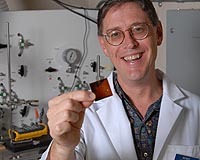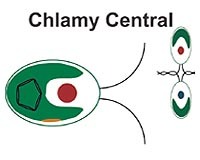A new volume published by the Geological Society of America sheds light on mysterious earthquakes in the interiors of continents. These earthquakes, like those that occur in the central U.S., are what the book's editors describe as "an embarrassing stepchild of modern earthquake seismology." Continental Intraplate Earthquakes: Science, Hazard, and Policy Issues provides a comprehensive overview of these rare but very real global hazards.
The plate tectonics revolution of the 20th century elegantly explained why most earthquakes occur where they do - at Earth's plate boundaries. It didn't explain, however, the occurrence of intraplate quakes and the deformation processes that give rise to them. As a result, geologists studying areas like the central U.S., western Europe, and Australia, don't know what causes these quakes, how often they will happen in the future, and how dangerous they are.
An 85 million-year-old dinosaur skull has been found in southwestern Japan, one of the oldest discoveries of its kind in the country, the Kyodo news agency said on Saturday.
The fossilized skull, belonging to a herbivore called hadrosaurid, was unearthed on a mountain in the town of Mifune in Kumamoto prefecture, Kyodo said, quoting an official of the Mifune Dinosaur Museum.
The fossil was found in February 2004 by an amateur expert, but only identified as the skull of a hadrosaurid after a delicate cleaning process.
U.S. scientists have identified a new dinosaur species found to have populated the Grand Staircase-Escalante National Monument area in Utah.
"It was one of the most robust duck-billed dinosaurs ever," said Utah Museum of Natural History paleontologist Terry Gates. "It was a monster."
Researchers from the museum, the national monument and California's Raymond Alf Museum of Paleontology unearthed fossils of the ancient plant-eater from the rocks of the Kaiparowits Formation.
Undergraduate astronomy students at the University of Washington combing through images from a specialized telescope have discovered more than 1,300 asteroids that had never before been observed. That is about one out of every 250 known objects in the solar system.
Irene Klotz
ReutersFri, 12 Oct 2007 17:18 UTC
A Russian capsule carrying a new crew for the International Space Station and Malaysia's first astronaut slipped into a berthing port at the orbital outpost on Friday as the space ships sailed 220 miles above Earth.

|
| ©REUTERS/NASA
|
| Spaceflight participant Sheikh Muszaphar Shukor of Malaysia floats inside the Destiny module of the International Space Station after arriving aboard the orbiting laboratory October 12, 2007 in this image from NASA TV.
|
The widely photographed and heavily studied Orion Nebula is nearly 300 light-years closer to Earth than previously thought, according to a new study.
The finding, detailed in the Oct. 10 issue of Astrophysical Journal, also hikes up the age of the nebula's stellar inhabitants.
A carbon-rich black layer, dating to {approx}12.9 ka, has been previously identified at {approx}50 Clovis-age sites across North America and appears contemporaneous with the abrupt onset of Younger Dryas (YD) cooling. The in situ bones of extinct Pleistocene megafauna, along with Clovis tool assemblages, occur below this black layer but not within or above it. Causes for the extinctions, YD cooling, and termination of Clovis culture have long been controversial. In this paper, we provide evidence for an extraterrestrial (ET) impact event at {cong}12.9 ka, which we hypothesize caused abrupt environmental changes that contributed to YD cooling, major ecological reorganization, broad-scale extinctions, and rapid human behavioral shifts at the end of the Clovis Period. Clovis-age sites in North American are overlain by a thin, discrete layer with varying peak abundances of (i) magnetic grains with iridium, (ii) magnetic microspherules, (iii) charcoal, (iv) soot, (v) carbon spherules, (vi) glass-like carbon containing nanodiamonds, and (vii) fullerenes with ET helium, all of which are evidence for an ET impact and associated biomass burning at {approx}12.9 ka. This layer also extends throughout at least 15 Carolina Bays, which are unique, elliptical depressions, oriented to the northwest across the Atlantic Coastal Plain. We propose that one or more large, low-density ET objects exploded over northern North America, partially destabilizing the Laurentide Ice Sheet and triggering YD cooling. The shock wave, thermal pulse, and event-related environmental effects (e.g., extensive biomass burning and food limitations) contributed to end-Pleistocene megafaunal extinctions and adaptive shifts among PaleoAmericans in North America.
A modified plastic material greatly improves the ability to separate global warming-linked carbon dioxide from natural gas as the gas is prepared for use, according to engineers at The University of Texas at Austin who have analyzed the new plastic's performance.

|
| ©Erin McCarley
|
| Freeman holds a sample of the new membrane material found to greatly improve the ability to separate global warming-linked carbon dioxide from natural gas as the gas is prepared for use. The new membrane's capabilities will be reported in the Oct. 12 issue of Science.
|
Japan's robotics industry is expected to show robust growth and remain the world leader thanks to growing exports to emerging economies, an industry group said Thursday.

|
| ©Unknown
|
University of Minnesota researchers contributed to a national effort to sequence the genome of an ancient, one-celled organism that will help advance research in a broad range of areas, from biofuels to restoring the environment to understanding a variety of human diseases.

|
| ©Unknown
|
| Chlamydomonas reinhardtii, known affectionately as "Chlamy," is an ancestor of plants and animals that retains characteristics of both.
|
